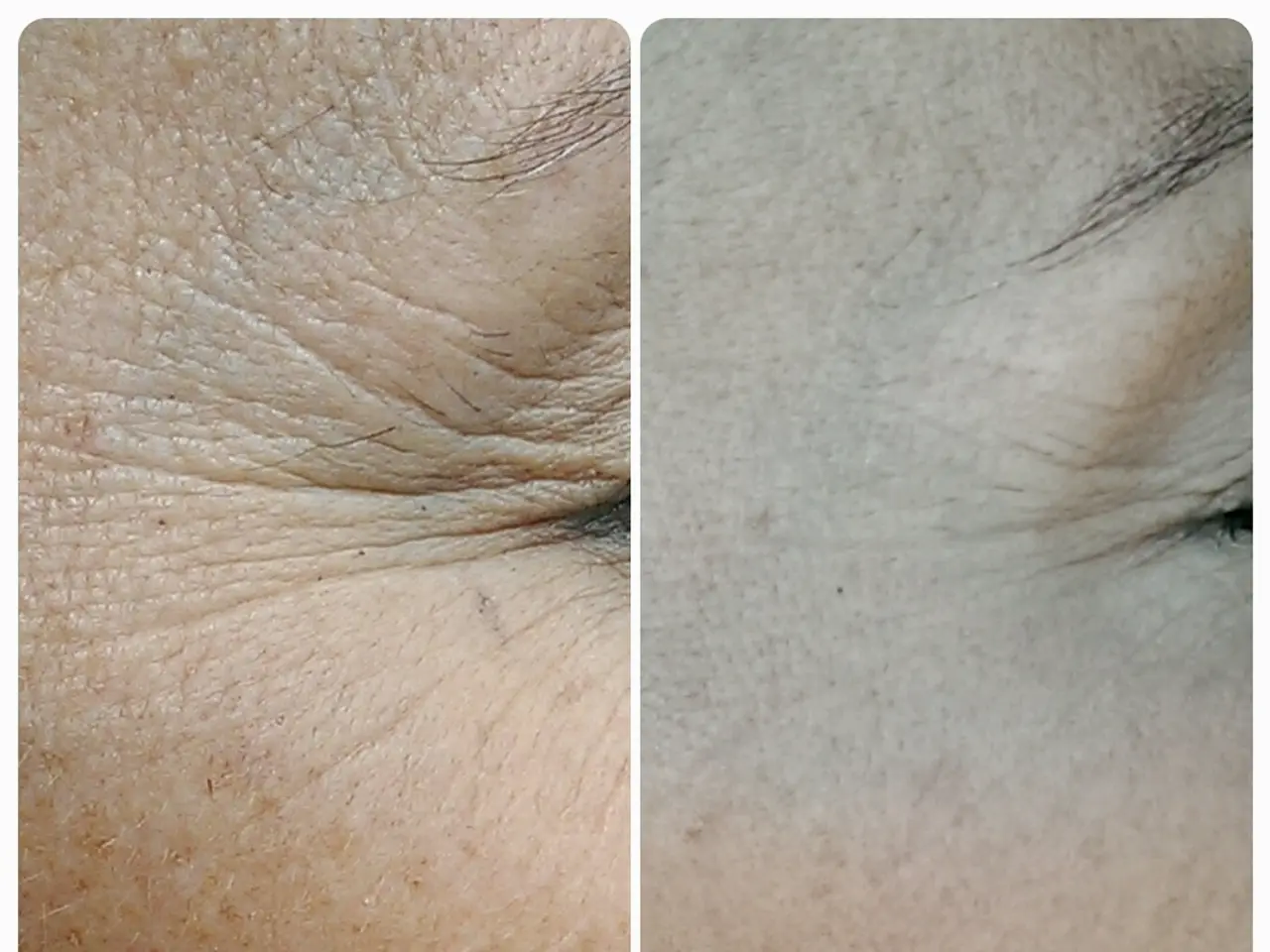Cream Battle: Examining Similarities, Differences, Appropriate Usage for Serum and Moisturizer
In the realm of skincare, understanding the role and benefits of face serums and moisturizers can significantly enhance your routine. These two essential products, when used together, address deep and surface-level needs, offering a comprehensive approach to maintaining healthy, radiant skin.
The Role of Face Serums
Face serums are lightweight, concentrated formulas with smaller molecules that penetrate deeply into the skin to deliver targeted active ingredients. These potent liquids are designed to address specific concerns such as dark spots, fine lines, dullness, uneven tone, and dehydration.
Serums provide intense hydration, especially those with hyaluronic acid, brightening effects (like vitamin C serums), anti-aging treatment, and can improve elasticity and resilience by penetrating deeply and delivering a high concentration of active ingredients.
The Role of Moisturizers
Moisturizers, on the other hand, are thicker, creamier products designed to hydrate the skin by locking in moisture and forming a protective barrier on the surface. They prevent water loss and shield the skin from external irritants like UV rays and pollution.
Moisturizers maintain skin hydration throughout the day or night, keep the skin soft and supple, and protect it by creating a barrier that retains water and locks in nutrients.
Using Serums and Moisturizers Together
The complementary use of serums and moisturizers helps optimise skin health and appearance. Serums treat specific concerns deeply, while moisturizers ensure hydration and protection. Skipping either can reduce the effectiveness of your routine—using only moisturizer might not improve targeted issues, and using only serum may leave skin feeling dry or unprotected.
When applying these products, serums are applied after cleansing but before moisturizers to allow the active ingredients to penetrate the skin effectively. Moisturizers go on afterward to seal in hydration and protect the skin.
Choosing the Right Serum and Moisturizer
Choosing the right serum and moisturizer involves identifying skin type, understanding skin concerns, checking ingredients, patch testing, reading reviews and research, and consulting a dermatologist. With regular use, face serums deeply hydrate the skin, brighten it, reduce dark spots, protect the skin from environmental damage, reduce acne, and firm and tighten the skin.
In summary, a well-rounded skincare routine includes both face serums and moisturizers. The former offers targeted treatment and delivers active ingredients deep into the skin to provide results, while the latter forms a barrier on the skin's top layer that locks in moisture and prevents dryness. By understanding their roles and benefits, you can optimise your skincare routine for maximum effectiveness.
- For addressing specific concerns such as acne, dark spots, fine lines, or dehydration, incorporating a serum like salicylic acid or vitamin C into your skincare routine can be beneficial.
- To ensure your skincare routine effectively tackles targeted issues while maintaining hydration and protection, it's important to use both a serum and a moisturizer in tandem.
- Serum, applied after cleansing, penetrates deeply into the skin delivering active ingredients like hyaluronic acid or retinol, while a moisturizer, applied afterward, creates a protective barrier and locks in hydration for the skin.
- Vegan skincare products, including serums and moisturizers, are a great option for those with sensitive skin who are mindful about the health-and-wellness aspects of their skincare choices.
- Ingredients like niacinamide, hyaluronic acid, and vitamin C in serums can brighten the skin, improve elasticity, and hydrate, while sunscreen and a moisturizer with sunscreen provide protection from harmful UV rays.
- In cases of acne-prone skin, products like benzoyl peroxide, Salicylic acid, and retinol can be effective in treating breakouts, while moisturizers help maintain hydration without clogging pores.
- When selecting a serum and moisturizer, consider your skin type, concerns, and preferences, and consult a dermatologist or do patch tests to ensure they are suitable for your skin.
- By understanding the roles and benefits of serums and moisturizers in your skincare routine, you can optimize the health and appearance of your skin, as guided by science.
- Incorporating components like eye creams to target the delicate skin around the eyes can complete a comprehensive skincare routine, aiming for a healthy, radiant complexion.




